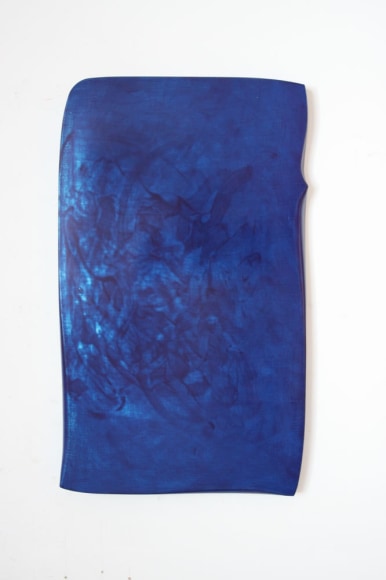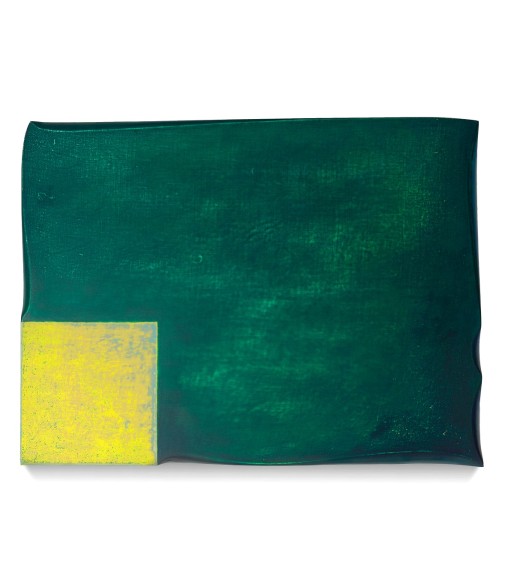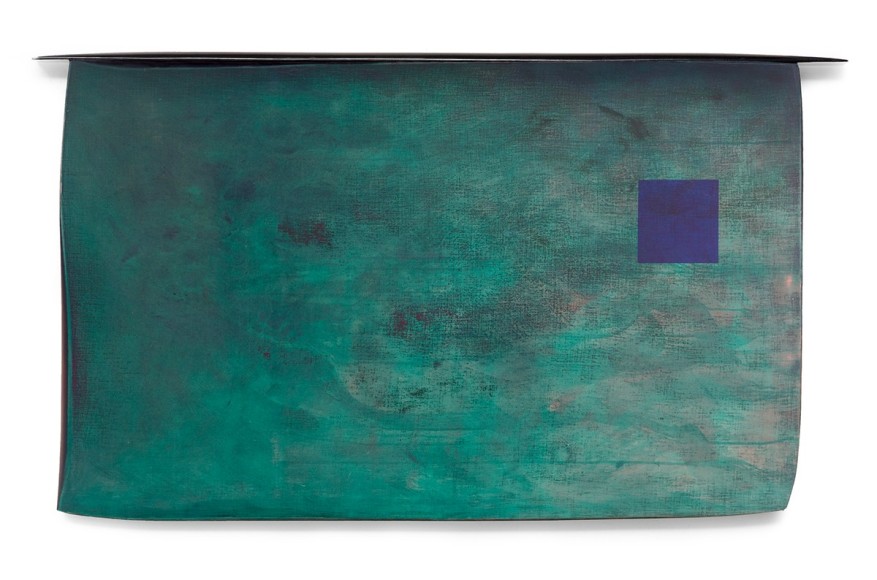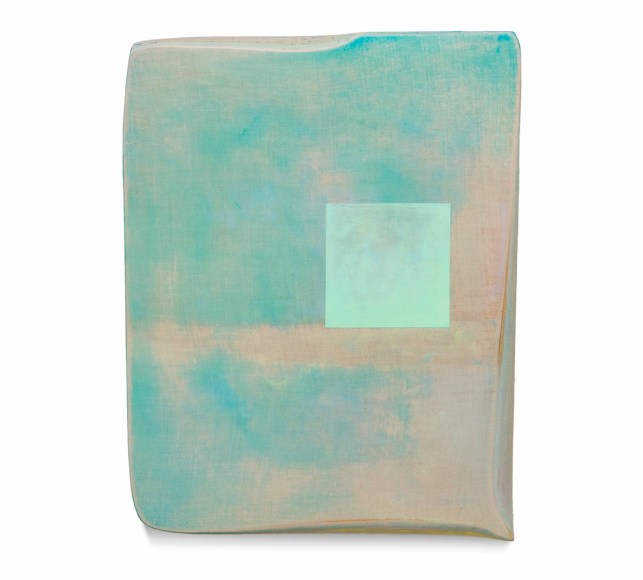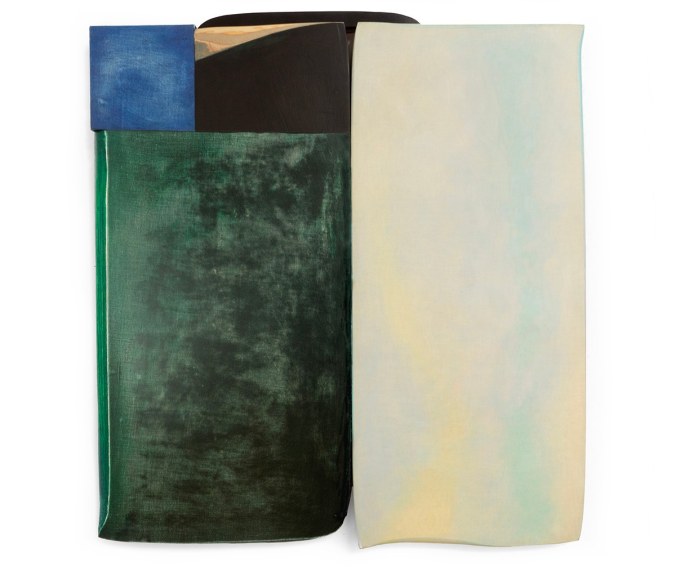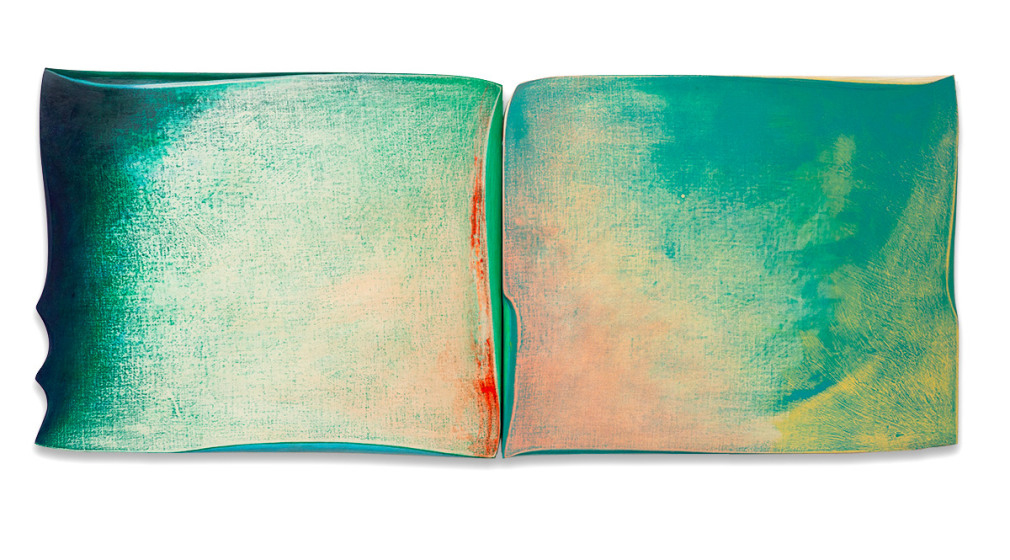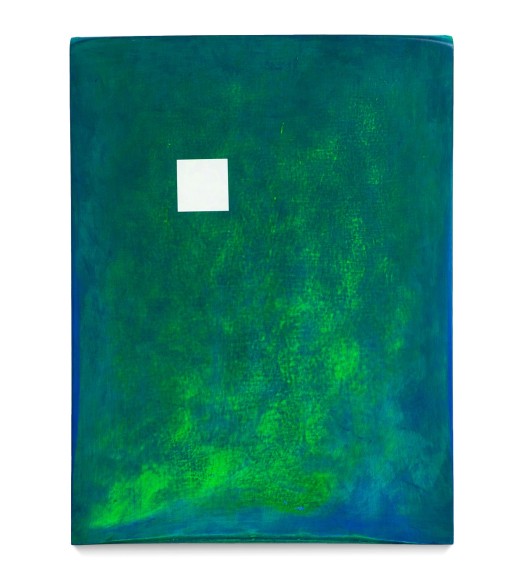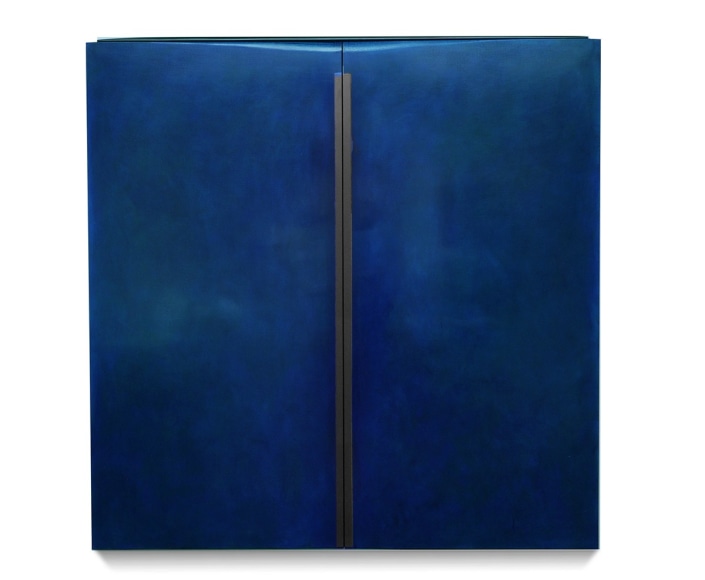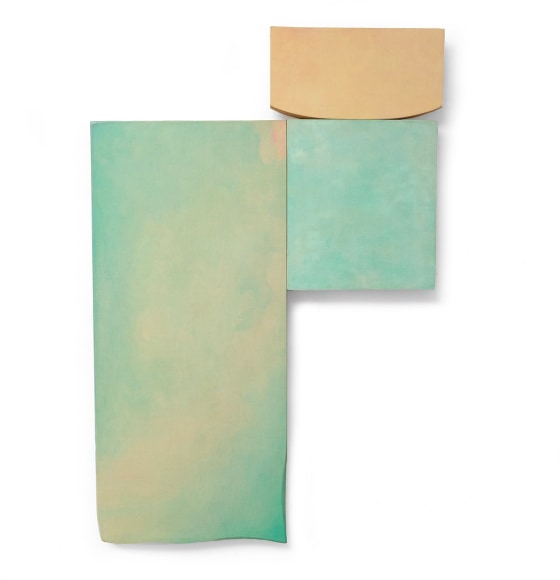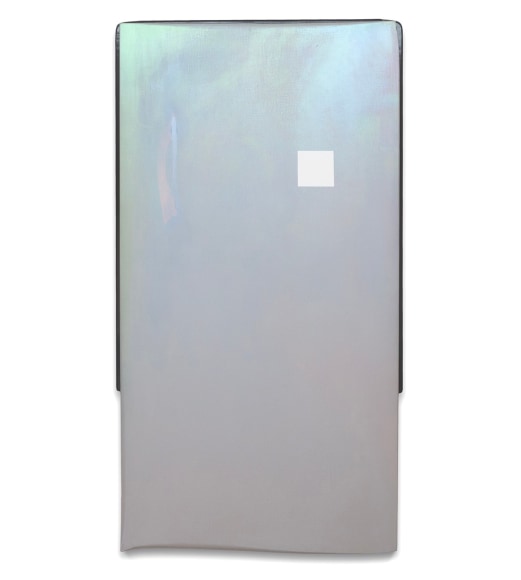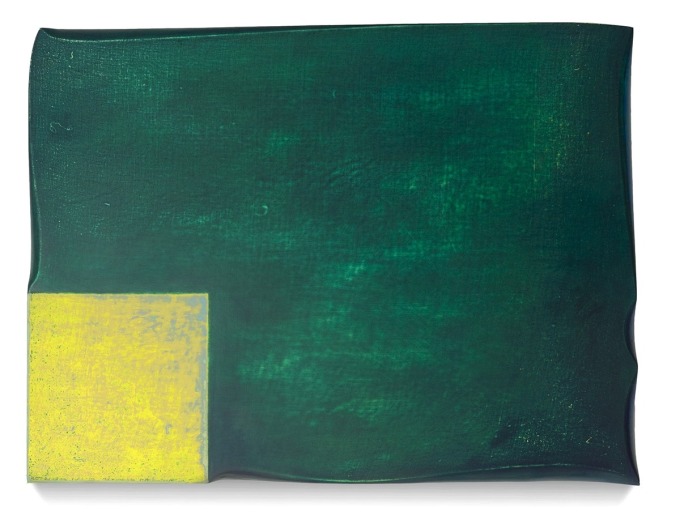
We are pleased to present new sculptural paintings by Robert Yasuda (b. 1940, Hawaii) who is known for luminous multi-panel works on carved wood that transmit and transform light.
Yasuda first came to prominence in the late 1970s and early 1980s with experimental works that resisted traditional definitions of painting. Inspired by travels through India, Japan and Southeast Asia, he veered away from the Western notion of painting functioning like a window onto the world. Instead, he was drawn to Eastern approaches to picture-making and framing including Japanese scroll paintings and Chinese paintings resting on ornately carved stands. Having spent time shaping and sanding wood surfboards in his youth, he naturally gravitated toward working with wood and began experimenting with sheer fabric and acrylic paint on thick wooden boards.
The artist’s latest body of work is a culmination of his decades-long exploration of perception, light and space. On view will be a series of atmospheric paintings rooted in his early encounters with nature in Hawaii where he was born and raised.
Yasuda’s iridescent paintings are composed of translucent veil-like fields of color layered on slabs of wood that protrude from the wall or nestle into corners. Several works are constructed to cast a reflected glow of colored light into the surrounding space. Depending on where you stand, the surfaces of the paintings shift in color and temperature.
“For many people, looking at a painting for 20 seconds can be extremely long but these are pieces that reveal themselves over time,” says Yasuda, who invites viewers to pause and immerse themselves in the work in order to perceive these subtle transformations.
Yasuda begins by shaping wooden panels, which are up to two inches thick, with chisels and grinders. Softening harsh vertical lines, he introduces bowed and gently sloping edges as well as sharply upturned corners. After painting a base layer onto the wood, he wraps the wood in diaphanous cotton. Adding as many as 40 coats of pearlescent acrylic paint, he suspends the fabric amid layers of luminous color. Most of his works are multi-paneled, with intricately wrought and detailed seams, and mounted on cradle-like structures that push them away from the wall.
Several of the works on view feature aqueous expanses of rich blues and lush greens evoking the ocean. In other pieces, sensuous swathes of paint evoke sunsets or the iridescent lining of seashells. “My entire childhood I saw myriad greens in the countryside of Hawaii and I spent a great deal of time diving…These works are connected with that point of view and the process of meditating on nature,” says Yasuda.
Robert Yasuda is an American painter born in Lihue, Kauai, Hawaii in 1940. He is known for his subtle paintings exploring ephemeral qualities of light and visual perception. Yasuda moved from Hawaii to New York City in 1958 where he attended Pratt Institute, Brooklyn, completing a BFA and MFA and immersed himself in the work of New York School artists.
Early in his career, Yasuda sought to create distinctly sculptural works that functioned more as objects in space than flat, illusionary surfaces. Today, he has built a reputation for his minimalist multi-panel painting and monumental site-specific installations.
Notable installations include large, site-specific paintings at New York’s MoMA PS1; the Museum of Contemporary Art, Chicago; and the Corcoran Gallery of Art, Washington, D.C. Early exhibitions include solo shows at Galerie Bruno Bischofberger (Zurich and St. Moritz), 1968 and 1969, and in 1975, the first of six shows at the famed Betty Parsons Gallery, New York.
Yasuda has been recognized with awards from the National Endowment for the Arts and the American Academy of Arts and Letters. His works are in the permanent collections of the Brooklyn Museum, New York; the Library of Congress, Washington, D.C.; The New York Public Library; Carnegie Institute, Pittsburgh; and The McNay Art Museum, San Antonio, Texas.
Yasuda lives and works in New York City and Sugarloaf Key, Florida.


